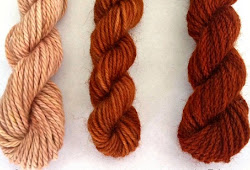Now You Know Effect of Temperature Gradient in Different Types of Dyeing (Reactive & Disperse)
Monday, 28 May 2018
Edit
Effect of Temperature Gradient in Different Kinds of Dyeing (Reactive & Disperse)
Miraduzzaman Chowdhury Mugdho
Department of Textile Engineering,
Primeasia University, Dhaka
Email: immimugdho@gmail.com
Miraduzzaman Chowdhury Mugdho
Department of Textile Engineering,
Primeasia University, Dhaka
Email: immimugdho@gmail.com
Content:
- What is temperature gradient?
- What is reactive & disperse dye?
- Recipe for reactive & disperse dye.
- Importance of temperature gradient for reactive & disperse dye.
It is a physical quantity that describes in which direction and at what rate the temperature changes the most rapidly around a particular location. The temperature gradient is a dimensional quantity expressed in units of degrees (on a particular temperature scale) per unit length. The SI unit is kelvin per meter (K/m).
Reactive dye:
A dye, which is capable of reacting chemically with a substrate to form a covalent dye substrate linkage, is known as reactive dye.
 |
| Fig: Dyeing |
For cold brand,
| Reactive dye | 1% OWF (1% stock) |
| Wetting agent | 1cc/L(1% stock) |
| Nacl | 50g/l |
| 1cc/l | |
| M:L | 1:50 |
| Sample weight | As required. |
| Time | 30min |
| Temperature | 40 degree |
| PH | 10 |
| Soda | 20g/l |
For hot brand,
| Reactive dye | 1% OWF (1% stock) |
| Wetting agent | 1cc/L(1% stock) |
| Nacl | 50g/l |
| 1cc/l | |
| M:L | 1:50 |
| Sample weight | As required. |
| Time | 30min |
| Temperature | |
| PH | 11.5 |
| Soda | 30 g/l |
Why temperature gradient is necessary for cotton fabric with reactive dye?
Temperature of hot brand & cold brand of reactive dye is 40 & 80 degree c. If we increase the temperature very firstly than there will be hydrolyses reaction. It is the reaction between water and dye. Proper temperature gradient(2degree/min) gives time to soaks the fabric to water proper adsorption of dye to fabric surface. When the solution will reach required temperature than sodium hydroxide is using as fixing agent.
So, without proper temperature gradient there is possibility of variation of shade because of wastage of dye from hydrolyses reaction.
Related:
Dyes are coloured, unsaturated organic chemical compounds capable of giving colour to a substrate (a textile), i.e. colouring or dyeing it.
There is 3 types of dyeing method which is given below:
Why temperature gradient is necessary for polyester fabric with disperse dye?
In case of dyeing with disperse dye, temperature gradient (4 degree/min) plays an important role. For the swelling of fibre, temperature above 100°C is required if high temperature dyeing method is applied. Again in case of carrier dyeing method, this swelling occurs at 85-90°C. If it is kept for more time, then dye sublimation and loss of fabric strength may occur. Temperature gradient also influence the aggregation of dyes & swelling of fiber. The rate of swelling of fiber is always more than the aggregation of dyes. Otherwise proper dyeing will not possible.
Sumber http://textilelearner.blogspot.com







